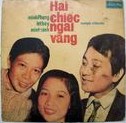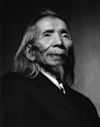05:23 EDT SATurday, 27/04/2024
•Menu
•Top News
-
 In Memory of Singer Nhật Sơn
In Memory of Singer Nhật Sơn
-
 Gia Bao revealed the reason behind Minh Canh’s invitation to participate in Vietnamese talent promotion
Gia Bao revealed the reason behind Minh Canh’s invitation to participate in Vietnamese talent promotion
-
 “First famous vocalist” Minh Canh 86 years old: How is your health and voice?
“First famous vocalist” Minh Canh 86 years old: How is your health and voice?
- Japanese artist: Why are Vietnamese people so kind and beautiful?
-
 Artist Minh Canh suddenly has a second live show
Artist Minh Canh suddenly has a second live show
-
 After Decades Under the Bed, a 1974 Vietnamese Film Finds an Audience Online
After Decades Under the Bed, a 1974 Vietnamese Film Finds an Audience Online
-
 Artist Kieu Phuong Loan is surprised to see her image 35 years ago
Artist Kieu Phuong Loan is surprised to see her image 35 years ago
- 5.000 Vietnamese studying in France: What's new in visa and scholarship policies in 2024?
-
 Doan Minh Tai looks like a gentleman, wearing a Mon Amie suit
Doan Minh Tai looks like a gentleman, wearing a Mon Amie suit
-
 Annual Book Street Festival 2024 on Tet holiday to open on February 7
Annual Book Street Festival 2024 on Tet holiday to open on February 7
•Random News
•Counter
![]() Online :
9
Online :
9
![]() Today :
258
Today :
258
![]() This month
: 88952
This month
: 88952
![]() Total : 2632899
Total : 2632899
 »
News
»
Art
»
News
»
Art

Vietnam's banh mi named world's most delicious sandwich
ietnamese banh mi (baguette) has been ranked first in the list of the top 100 sandwiches in the world by international food website Taste Atlas.
Vọng Cổ : Sáu Câu (Six Phrases)
Posted at: TUEsday - 24/03/2015 15:48 - Viewed: 4402
Vọng Cổ : Sáu Câu (Six Phrases)
Câu Một Vọng Cổ (Vọng Cổ: Phrase One)
The first phrase of vọng cổ always begins with a rao, an improvised introduction by all the musicians. If there is a vocalist, the music fades away and then he begins singing the first line of text with no accompaniment. This vocal line, also part of the rao, is improvised in both melody and rhythm. The next-to-last note is typically drawn out for a very long time before the singer cadences on Hò and all musicians join him. This first declaration is considered the "crowd-pleaser," and well-performed renditions are always met with applause as soon as the cadence hits.
Because of the rao, the first phrase is shortened to only sixteen measures, with cadences as follows:
Hò --- --- Hò
--- --- --- (+) Xê
--- --- --- Xang
--- --- --- (+) Cống
(+) denotes a song loan clap
The first Hò at the beginning of the table represents the last cadence of the rao introduction. Measures with dashes through them represent free improvisation (within the constraints of the hơi until the cadence.
From câu một, one always transitions to another phrase.
Câu Hai Vọng Cổ (Vọng Cổ: Phrase Two)
--- --- --- Xê
--- --- --- Xang
--- --- --- Xang
--- --- --- Hò
--- --- --- Hò
--- --- --- (+) Xê
--- --- --- Xê or Xang
--- --- --- (+) Xang
(+) denotes a song loan clap
The second phrase can be used as a passing phrase, especially in the "one, two, three" pattern, or it can be used as a closing phrase, with the final cadence on Xang adding an emotional charge suitable for laments and grief-laden drama. The preceding cadence floats between xê and xang, although xê might be used to soften the transition to Xang at the end.
Câu Ba Vọng Cổ (Vọng Cổ: Phrase Three)
--- --- --- Xê
--- --- --- Xang
--- --- --- Xang
--- --- --- Xê
--- --- --- Xang
--- --- --- (+) Cống
--- --- --- Xê
--- --- --- (+) Hò
(+) denotes a song loan clap
Câu ba (phrase three) usually appears as a transition from câu hai (phrase two). It works well as a closing phrase, because it ends on Hò (tonic). For the same reason, one rarely continues directly from this phrase to another one; instead, musicians may transition to another song, perform another rao, then finish the vọng cổ cycle with "four -> five -> six" or "five -> six".
Câu Bốn Vọng Cổ (Vọng Cổ: Phrase Four)
--- --- --- Hò
--- --- --- Xề
--- --- --- Xề
--- --- --- Xê
--- --- --- Xang
--- --- --- (+) Cống
--- --- --- Xang or Xê
--- --- --- (+) Hò
(+) denotes a song loan clap
The notable aspect of this phrase is to distinguish between Xê, with circumflex only, and Xề, with circumflex and grave (see diacritics for details). Xê represents the pitch above Hò shown previously, while Xề represents one octave below that note. Both are used in this phrase as cadences.
Câu bốn is occasionally used as the opening phrase in a vọng cổ performance. In this case, it is truncated to sixteen measures (the last four cadences) and then merged with câu một (details below in "Phrase Order"). The new phrase, which is treated just like câu một, becomes:
--- --- --- Hò
--- --- --- (+) Xê
--- --- --- Xê
--- --- --- (+) Hò
(+) denotes a song loan clap
Câu Năm Vọng Cổ (Vọng Cổ: Phrase Five)
--- --- --- Xê
--- --- --- Hò
--- --- --- Hò
--- --- --- Hò
--- --- --- Hò
--- --- --- (+) Xê
--- --- --- Xang or Xê
--- --- --- (+) Xề
(+) denotes a song loan clap
Câu Năm is typically not recognized throughout by its melodic nature, but by its rhythm. While other phrases show stresses on the beat, this phrase begins with syncopated stresses and novel rhythms. It also boasts the most unique ending cadence, on the pitch Xề in the low register. This closing cadence is often referred to as "xuống xề" (going down to the xề pitch).
This phrase typically continues to câu sáu, because xề does not have the melodic finality of xang or hò.
Câu Sáu Vọng Cổ (Vọng Cổ: Phrase Six)
--- --- --- Xề
--- --- --- Xê
--- --- --- Xang
--- --- --- Cống
--- --- --- Xê
--- --- --- (+) Xề
--- --- --- Xê
--- --- --- (+) Hò
(+) denotes a song loan clap
The use of xê and xề continuously can be seen as strengthening the return to hò in similar fashion to the use of the "dominant" (fifth) in classical western music. The finality of this phrase is always evident during performance.
Phrase Order
The phrases can be played in order, but this is not always the case. Popular combinations of phrases include:
one, two, three
one, two, three, break, four, five six
one, two, break, five, six
one, five, six
Other combinations are possible, but these patterns represent the majority of cases. The break in some patterns represent a transition to some other piece. Possibilities include ngâm thơ (poetry declamation, tân nhạc (modern popular music), nhạc cổ (traditional music), dân ca (folk songs), or even another rao (improvised introduction).
When one starts with a phrase other than câu một, it's necessary to merge the two phrases (the new phrase and câu một to make a new opening phrase that is both recognizeable and cohesive. First, one can remove the first sixteen measures, cutting the phrase to sixteen measures like câu một (phrase one). This leaves the necessary space for the rao. Afterwards, the phrases are merged, so that the first eight measures are exactly the same as câu một and the last eight measures are the last eight measures of the other phrase. This was how the diagram for câu bốn (phrase four) above was prepared. Because the first, fourth, and fifth phrases are the phrases used most as the starting phrase after the rao, this technique is typically only used for the fourth and fifth phrases.
Famous Songs Based on Vọng Cổ
As has been stressed above, vọng cổ has more to do with a system of music than any particular song. No two performances of vọng cổ music will ever be the same, and futhermore, writers have penned many different verses to be used in vọng cổ for many different performers and plays.
Some of the most renowned vọng cổ pieces have come from the prolific composer Viễn Châu. Some of his famous verses include the lament by Võ Đông Sơ for his lover Bạch Thu Hà in the play Võ Đông Sơ Bạch Thu Hà( sung by Minh Cảnh) and the lament by Lan as she becomes a Buddhist nun in the play Lan và Điệp (sung by Út Bạch Lan).
The first phrase of vọng cổ always begins with a rao, an improvised introduction by all the musicians. If there is a vocalist, the music fades away and then he begins singing the first line of text with no accompaniment. This vocal line, also part of the rao, is improvised in both melody and rhythm. The next-to-last note is typically drawn out for a very long time before the singer cadences on Hò and all musicians join him. This first declaration is considered the "crowd-pleaser," and well-performed renditions are always met with applause as soon as the cadence hits.
Because of the rao, the first phrase is shortened to only sixteen measures, with cadences as follows:
Hò --- --- Hò
--- --- --- (+) Xê
--- --- --- Xang
--- --- --- (+) Cống
(+) denotes a song loan clap
The first Hò at the beginning of the table represents the last cadence of the rao introduction. Measures with dashes through them represent free improvisation (within the constraints of the hơi until the cadence.
From câu một, one always transitions to another phrase.
Câu Hai Vọng Cổ (Vọng Cổ: Phrase Two)
--- --- --- Xê
--- --- --- Xang
--- --- --- Xang
--- --- --- Hò
--- --- --- Hò
--- --- --- (+) Xê
--- --- --- Xê or Xang
--- --- --- (+) Xang
(+) denotes a song loan clap
The second phrase can be used as a passing phrase, especially in the "one, two, three" pattern, or it can be used as a closing phrase, with the final cadence on Xang adding an emotional charge suitable for laments and grief-laden drama. The preceding cadence floats between xê and xang, although xê might be used to soften the transition to Xang at the end.
Câu Ba Vọng Cổ (Vọng Cổ: Phrase Three)
--- --- --- Xê
--- --- --- Xang
--- --- --- Xang
--- --- --- Xê
--- --- --- Xang
--- --- --- (+) Cống
--- --- --- Xê
--- --- --- (+) Hò
(+) denotes a song loan clap
Câu ba (phrase three) usually appears as a transition from câu hai (phrase two). It works well as a closing phrase, because it ends on Hò (tonic). For the same reason, one rarely continues directly from this phrase to another one; instead, musicians may transition to another song, perform another rao, then finish the vọng cổ cycle with "four -> five -> six" or "five -> six".
Câu Bốn Vọng Cổ (Vọng Cổ: Phrase Four)
--- --- --- Hò
--- --- --- Xề
--- --- --- Xề
--- --- --- Xê
--- --- --- Xang
--- --- --- (+) Cống
--- --- --- Xang or Xê
--- --- --- (+) Hò
(+) denotes a song loan clap
The notable aspect of this phrase is to distinguish between Xê, with circumflex only, and Xề, with circumflex and grave (see diacritics for details). Xê represents the pitch above Hò shown previously, while Xề represents one octave below that note. Both are used in this phrase as cadences.
Câu bốn is occasionally used as the opening phrase in a vọng cổ performance. In this case, it is truncated to sixteen measures (the last four cadences) and then merged with câu một (details below in "Phrase Order"). The new phrase, which is treated just like câu một, becomes:
--- --- --- Hò
--- --- --- (+) Xê
--- --- --- Xê
--- --- --- (+) Hò
(+) denotes a song loan clap
Câu Năm Vọng Cổ (Vọng Cổ: Phrase Five)
--- --- --- Xê
--- --- --- Hò
--- --- --- Hò
--- --- --- Hò
--- --- --- Hò
--- --- --- (+) Xê
--- --- --- Xang or Xê
--- --- --- (+) Xề
(+) denotes a song loan clap
Câu Năm is typically not recognized throughout by its melodic nature, but by its rhythm. While other phrases show stresses on the beat, this phrase begins with syncopated stresses and novel rhythms. It also boasts the most unique ending cadence, on the pitch Xề in the low register. This closing cadence is often referred to as "xuống xề" (going down to the xề pitch).
This phrase typically continues to câu sáu, because xề does not have the melodic finality of xang or hò.
Câu Sáu Vọng Cổ (Vọng Cổ: Phrase Six)
--- --- --- Xề
--- --- --- Xê
--- --- --- Xang
--- --- --- Cống
--- --- --- Xê
--- --- --- (+) Xề
--- --- --- Xê
--- --- --- (+) Hò
(+) denotes a song loan clap
The use of xê and xề continuously can be seen as strengthening the return to hò in similar fashion to the use of the "dominant" (fifth) in classical western music. The finality of this phrase is always evident during performance.
Phrase Order
The phrases can be played in order, but this is not always the case. Popular combinations of phrases include:
one, two, three
one, two, three, break, four, five six
one, two, break, five, six
one, five, six
Other combinations are possible, but these patterns represent the majority of cases. The break in some patterns represent a transition to some other piece. Possibilities include ngâm thơ (poetry declamation, tân nhạc (modern popular music), nhạc cổ (traditional music), dân ca (folk songs), or even another rao (improvised introduction).
When one starts with a phrase other than câu một, it's necessary to merge the two phrases (the new phrase and câu một to make a new opening phrase that is both recognizeable and cohesive. First, one can remove the first sixteen measures, cutting the phrase to sixteen measures like câu một (phrase one). This leaves the necessary space for the rao. Afterwards, the phrases are merged, so that the first eight measures are exactly the same as câu một and the last eight measures are the last eight measures of the other phrase. This was how the diagram for câu bốn (phrase four) above was prepared. Because the first, fourth, and fifth phrases are the phrases used most as the starting phrase after the rao, this technique is typically only used for the fourth and fifth phrases.
Famous Songs Based on Vọng Cổ
As has been stressed above, vọng cổ has more to do with a system of music than any particular song. No two performances of vọng cổ music will ever be the same, and futhermore, writers have penned many different verses to be used in vọng cổ for many different performers and plays.
Some of the most renowned vọng cổ pieces have come from the prolific composer Viễn Châu. Some of his famous verses include the lament by Võ Đông Sơ for his lover Bạch Thu Hà in the play Võ Đông Sơ Bạch Thu Hà( sung by Minh Cảnh) and the lament by Lan as she becomes a Buddhist nun in the play Lan và Điệp (sung by Út Bạch Lan).
Source: tcgd theo VNW
Key:
modern vọng, cổ is, made up, of six, phrases of, thirty-two measures, noticeable cadence, ends each, sub-phrase of, four measures, at this, cadence all, instruments and, the vocalist, come back, together usually, hitting the, same note, at eight, measures before, the end, phrase the, song loan, is tapped, twice consecutively, by the, leader usually, the đàn
Newer articles
- Thang Long Royal Citadel and heritage promotion (17/12/2015)
- Ao Dai of days gone by (03/01/2016)
- Quang Binh welcomes massive jade Buddha (22/03/2016)
- Red silk cotton trees in full bloom in Do Son (18/05/2016)
- Remembering one of the greatest actors in Cai luong arts – the People’s Artist (NSND) Ut Tra On (15/10/2015)
- New cave discovered in Phong Nha (03/10/2015)
- Remembering a hick (hai lua) named Sen (14/04/2015)
- Painting exhibition celebrates German-Vietnamese diplomatic ties (12/05/2015)
- 10 Vietnamese food you need to try (02/06/2015)
- Unforgettable play : Mau Nhuom San Chua (05/04/2015)
Older articles
- THE ORIGIN OF THE VONG CO SONG “SẦU VƯƠNG Ý NHẠC” (01/03/2015)
•GO TO...
•Hot News
-
 Vietnam's banh mi named world's most delicious sandwich
Vietnam's banh mi named world's most delicious sandwich
-
 HCMC student accepted to 16 US universities
HCMC student accepted to 16 US universities
-
 Over 21,000 tourists visit Huong Pagoda on ticket sales' first day for festival
Over 21,000 tourists visit Huong Pagoda on ticket sales' first day for festival
-
 One more Vietnamese singer appears in Times Square in New York
One more Vietnamese singer appears in Times Square in New York
- Youth’s Tet festival to return to HCMC
-
 Annual Book Street Festival 2024 on Tet holiday to open on February 7
Annual Book Street Festival 2024 on Tet holiday to open on February 7
-
 Don Ca Tai Tu Nam Bo Festival 2023 opens in Bac Lieu
Don Ca Tai Tu Nam Bo Festival 2023 opens in Bac Lieu
-
 Who is the youngest female Cai Luong artist to be awarded People's Artist?
Who is the youngest female Cai Luong artist to be awarded People's Artist?
-
 Legendary cai luong singer Thanh Duoc passes away in US
Legendary cai luong singer Thanh Duoc passes away in US
-
 Concert to mark 100th birthday anniversary of great composer Van Cao
Concert to mark 100th birthday anniversary of great composer Van Cao
- Japanese artist: Why are Vietnamese people so kind and beautiful?
- 5.000 Vietnamese studying in France: What's new in visa and scholarship policies in 2024?
-
 Doan Minh Tai looks like a gentleman, wearing a Mon Amie suit
Doan Minh Tai looks like a gentleman, wearing a Mon Amie suit
-
 Artist Kieu Phuong Loan is surprised to see her image 35 years ago
Artist Kieu Phuong Loan is surprised to see her image 35 years ago
-
 In Memory of Singer Nhật Sơn
In Memory of Singer Nhật Sơn
-
 After Decades Under the Bed, a 1974 Vietnamese Film Finds an Audience Online
After Decades Under the Bed, a 1974 Vietnamese Film Finds an Audience Online
-
 Artist Minh Canh suddenly has a second live show
Artist Minh Canh suddenly has a second live show
-
 Gia Bao revealed the reason behind Minh Canh’s invitation to participate in Vietnamese talent promotion
Gia Bao revealed the reason behind Minh Canh’s invitation to participate in Vietnamese talent promotion
-
 “First famous vocalist” Minh Canh 86 years old: How is your health and voice?
“First famous vocalist” Minh Canh 86 years old: How is your health and voice?
- 2023 Ca Mau Southern Folk Cake Festival opens











Reader Comments